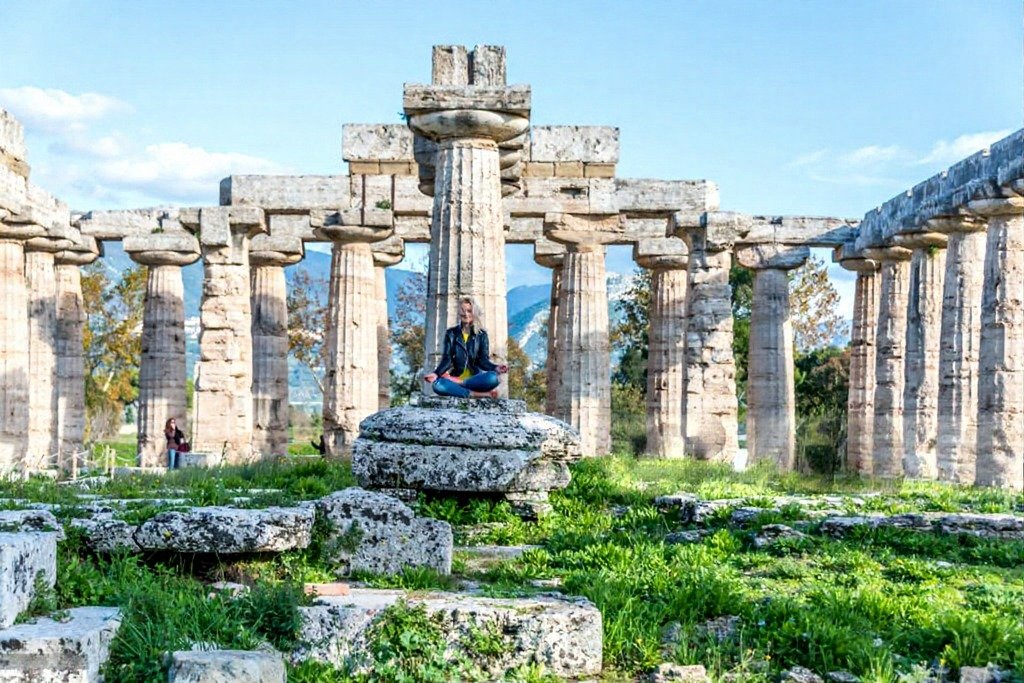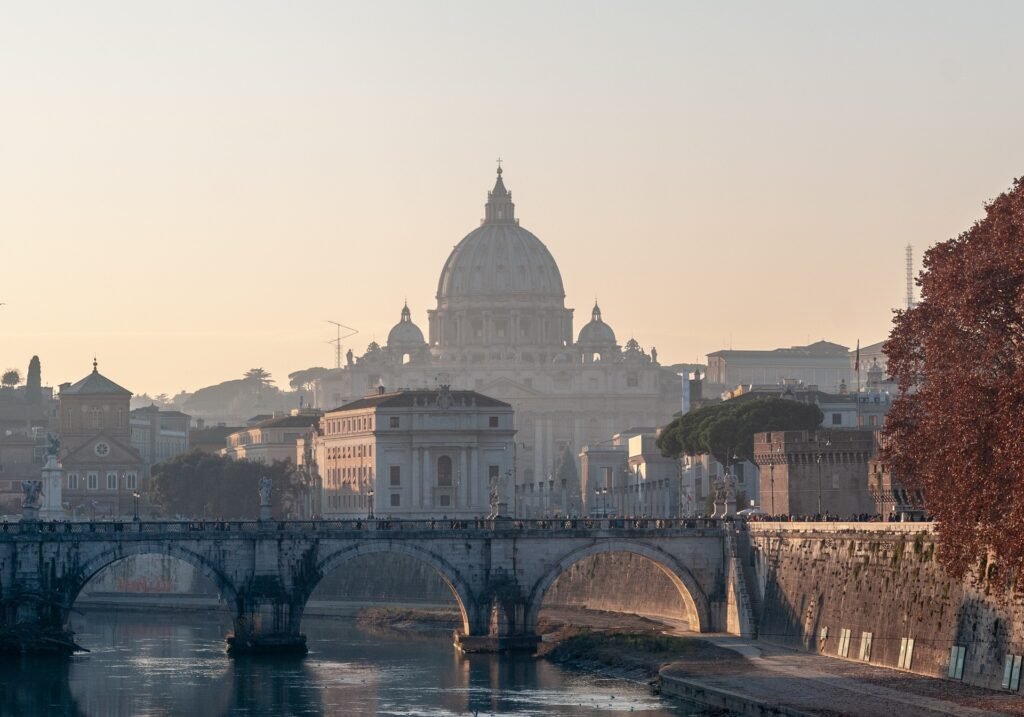The country of Italy is more than just a country; it is a living showcase of civilization. In my unforgettable journey through this Mediterranean masterpiece, I learned that every piazza, every marble column, and every winding alley has a story to tell. The best thing about Italy is its endless collection of stunning destinations that have shaped Western culture.
In this guide, I will share the list of famous landmarks in Italy I have walked through, including the Colosseum, and the cultural highlights of Florence, Milan, Venice, Naples, and Sicily.
How Many Famous Landmarks Are in Italy?
If you’re wondering about what are the famous landmarks in Italy, the answer might overwhelm you—in the best way possible. With 59 UNESCO World Heritage Sites, Italy has the highest number ever recognized. This is only a small part of what lies beneath the surface.
Whether you’re looking for coastal villages, cathedrals, Roman ruins, or natural wonders, this region is full of historical and cultural marvels. Each region has its crown jewel. Every city is a chapter in an eternal story.
20 Famous Landmarks in Italy to Visit
From the ancient ruins of Rome to the romantic canals of Venice, Italy is home to some of the world’s most famous landmarks. The following 20 iconic Italian sites embody the reasons why Italy continues to attract travelers around the globe.
Famous Landmarks in Rome, Italy
1. The Colosseum
It was the first time I stood before the Colosseum that I felt a sense of awe. In spite of seeing it in books and movies, nothing prepared me for its breathtaking presence. It was built in 72 AD to accommodate 50,000 spectators who gathered to watch gladiators fight and spectacles unfold.
It’s more than stone—it’s the heartbeat of ancient Rome. Truly, the most famous landmark in Italy and a masterpiece of Italian architecture that still shapes modern stadium designs.
2. The Roman Forum
The Roman Forum was just a short walk from the Colosseum, and suddenly I was walking through a city that had frozen in time. The Roman political, religious, and legal center was located in this plaza, which was founded around 7 BCE.
I walked among crumbling temples and columns, imagining Caesar and Cicero’s voices echoing through the ages.
3. The Pantheon
Rome’s Pantheon stunned me with its silent grandeur tucked away in its historic center. This masterpiece was originally built by Marcus Agrippa in 27 BCE and later reconstructed by Emperor Hadrian and holds the world’s record for the biggest unreinforced concrete dome.
As I stepped inside, I looked up at the oculus and felt deeply connected to a time when architecture and faith were one.
4. The St. Peter’s Basilica
Crossing into Vatican City felt like entering another world. The centerpiece of that world is St. Peter’s Basilica, a monument to sacred architecture. The basilica was built over what is thought to be St. Peter’s tomb, radiating grandeur and spirituality.
I’ll never forget the hush that fell over me beneath Michelangelo’s dome.
5. The Vatican City
Though only 44 hectares, Vatican City holds a universe of meaning. As the world’s smallest independent nation, it’s also the most spiritually dense. Walking through the Vatican Museums, staring at the ceiling of the Sistine Chapel, I felt completely dwarfed by human creativity and divine inspiration.
Note: If you are planning a visit to Rome, check out this guide about the best hotels in Rome with swimming pools for a luxurious way to unwind.
Famous Landmarks in Venice, Italy
6. St. Mark’s Basilica
Walking into Piazza San Marco, I was immediately drawn to St. Mark’s Basilica. This wasn’t just about the size or structure but also about the way the golden mosaics reflected the morning light.
With over 8,000 square meters of Byzantine brilliance, this 11th-century cathedral felt like a gateway into a spiritual and artistic golden age. As I entered, I couldn’t help but feel that Venice had saved its soul in stone and glass.
7. The Doge’s Palace
I was seduced by the beauty of the architectural structure of the Palazzo Ducale, which is adjacent to the basilica. The building stunned me when I discovered its dark history.
The Gothic beauty was once the political center of the Venetian Republic, and its ornate façade conceals tales of espionage, secret courts, and silent prisoners. Walking its halls, I felt as though I had stepped into a Venetian thriller.
8. The Rialto Bridge
Of all the famous monuments in Venice Italy, the Rialto Bridge felt the most personal. With the stalls still unopened and the water shimmering softly below, I crossed one of Venice’s oldest architectural marvels.
Built in the late 1500s by Antonio da Ponte, it’s as much a symbol of the city as the gondola itself.
9. The Grand Canal
In Venice, the Grand Canal is the city’s main artery, and what a magnificent one it is. Shaped like a reverse “S,” it cuts through the heart of the city, flanked by palaces that whisper secrets from centuries past.
As I glided down the canal on a Vaporetto, I passed Baroque balconies, Renaissance archways, and pastel reflections dancing on water. It’s not just a canal—it’s Venice’s story written in liquid gold.
Famous Landmarks in Florence, Italy
10. Florence Cathedral (Duomo)
When I first saw Florence’s Duomo, my breath caught. Brunelleschi’s dome rises above the city like a stone miracle—majestic, mathematical, and utterly mesmerizing. As I stood in its shadow, I felt both inspired and humbled.
From the candy-colored marble façade to the frescoed interior, it felt less like a building and more like a love letter to human brilliance.
11. The Uffizi Gallery
Stepping into the Uffizi Gallery felt like entering the imagination of the Renaissance. Originally a magistrates’ office, the building now houses treasures that changed the world.
I remember freezing in front of Botticelli’s The Birth of Venus—the colors, the softness, the symbolism. It was like staring into the soul of Florence itself.
12. The Palazzo Vecchio
At the heart of Piazza della Signoria stands Palazzo Vecchio, part medieval fortress, part Medici residence. As I roamed its vast halls, I could almost hear the voices of rebellion, revolution, and power that once echoed within.
Climbing the Arnolfo Tower, I was rewarded with sweeping views of Florence’s rooftops, bell towers, and the rolling Tuscan hills beyond.
Famous Landmarks in Milan, Italy
13. Duomo di Milano
Six centuries of devotion went into building the Duomo di Milano, and you feel every moment of it. With over 3,400 statues and 135 spires, this Gothic cathedral isn’t just a church—it’s a stone symphony.
I spent over an hour on the rooftop, watching the sun light up the Alps in the distance, all while standing beside the golden Madonnina that no building in Milan is allowed to outshine.
14. Galleria Vittorio Emanuele II
Just steps from the cathedral lies the Galleria Vittorio Emanuele II—a space that feels more like a palace than a shopping arcade. Beneath its soaring iron-and-glass dome, I sipped espresso and watched Milanese fashionistas glide across the mosaic floors.
It’s where elegance, architecture, and modern life meet with seamless flair.
15. Greek Theater of Taormina
The first time I reached Taormina, perched high above the Ionian Sea, I felt like I had stepped into a dreamscape. But nothing prepared me for the moment I entered the Greek Theater. Built-in the 3rd century BCE by the Greeks and later expanded by the Romans, this open-air amphitheater seamlessly blends human craftsmanship with nature’s grandeur.
As I sat on its weathered stone seats, watching Mount Etna smolder in the distance, I realized I wasn’t just visiting a monument—I was part of a centuries-old performance.
Famous Landmarks in Pisa, Italy
16. The Leaning Tower of Pisa
I had to see it to believe it. Standing before the Leaning Tower of Pisa, I was amazed at how an engineering mistake became one of the most famous landmarks in Italy. The building began tilting during construction in the 12th century due to unstable soil. My eyes were captivated by its surreal beauty as I climbed both sides, noticing the slight step difference between them.
Famous Landmarks in Sicily, Italy
17. The Greek Theater of Taormina
The view across Taormina’s Greek Theater was stunning, with Mount Etna smoldering in the distance and the sea shimmering below. It was built in the 3rd century BCE by the Greeks and later restored by the Romans. It combines history with scenery. I found it to be one of the most awe-inspiring famous landmarks that I’ve had the pleasure of discovering.
Famous Landmarks in Naples, Italy
18. The Ruins of Pompeii
As you walked through Pompeii, you felt as if you were entering a ghost city frozen in time. Along the stone roads, I passed frescoes, shops, and even a theater that was still intact. The volcano’s power was humbling—Mount Vesuvius looms ominously nearby.
This UNESCO site is among the most moving and historically rich famous landmarks in Italy I experienced on my journey.
Famous Landmarks in Verona, Italy
19. The Verona Arena
In Verona, I stumbled into the arena expecting ruins but I found a living stage. Once a place of gladiator matches, it now echoes with the sound of opera. As I sat in the stone bleachers, I imagined ancient cheers merging with modern applause.
Beautifully preserved, right in the heart of the city, this amphitheater reminds you why the most famous monuments in Italy still have stories.
Famous Landmarks in Amalfi, Italy
20. The Amalfi Coast
Driving the cliff-hugging road along the Amalfi Coast, I had to stop and breathe it in—the sea below, the cascading villages, the lemon-scented air. In Amalfi, I wandered narrow alleys and basked in views over the Gulf of Naples.
From Positano’s pastel slopes to Ravello’s garden terraces, this coastline is one of the most famous sights and landmarks in Italy that I explored.
Hidden Gems: Lesser-Known Italian Landmarks Worth Discovering
While Italy’s famous landmarks are breathtaking, some lesser-known sites offer equally unforgettable experiences. Explore Civita di Bagnoregio, the “dying city” perched on a hilltop, or the enchanting Alberobello with its iconic trulli houses in Puglia. In Sicily, the baroque town of Noto dazzles with pastel facades, while in Lombardy, Bergamo’s Città Alta is a medieval jewel.
Visiting these hidden treasures lets you wander without crowds, feel authentic Italian life, and create memories that are uniquely yours. They prove that Italy’s charm isn’t only in its fame but also in its secrets.
Conclusion
So, what are the famous landmarks in Italy? Truthfully, there isn’t just one. From the Colosseum to Florence’s Duomo, from Venice’s canals to Sicily’s ancient theaters, the entire country is a museum without walls. I’ve been lucky enough to walk through its history, feel its art, and absorb its spirit.
Each time I return, I find new meaning in old stones. And I know you will too.
Frequently Asked Questions
What is the oldest landmark in Italy?
The Pantheon in Rome is one of Italy’s oldest and best-preserved structures, still in use today and dating back over 2,000 years.
Which are the 8 most famous landmarks in Italy?
Top must-see landmarks include the Colosseum, Leaning Tower of Pisa, Vatican City, Florence Duomo, Venice’s Grand Canal, Pompeii, the Pantheon, and Milan Cathedral.
What is a famous landmark in Italy that leans?
The Leaning Tower of Pisa in Tuscany is world-famous for its unintended tilt, making it one of Italy’s most photographed landmarks.
What famous landmarks are in Italy’s north?
Northern Italy boasts iconic sites like the Milan Cathedral, Lake Como, the Dolomites, and the Verona Arena—a stunning blend of nature and heritage.
What is the most famous monument in Italy?
The Colosseum in Rome stands as the most famous monument of Italy, symbolizing the grandeur of the Roman Empire.
What are the famous monuments in Venice, Italy?
Venice’s famed landmarks include St. Mark’s Basilica, Doge’s Palace, Rialto Bridge, and the Bridge of Sighs—showcasing the city’s Gothic and Byzantine beauty.




